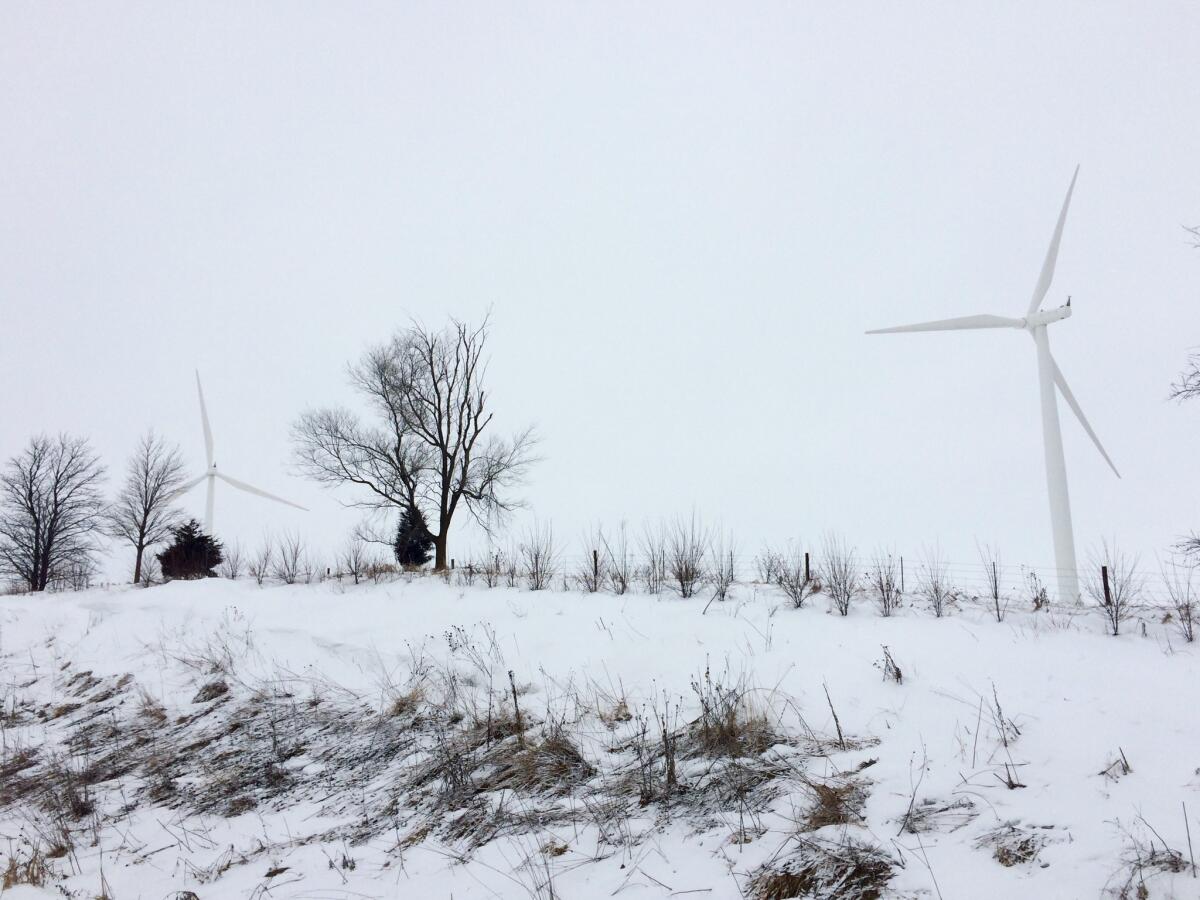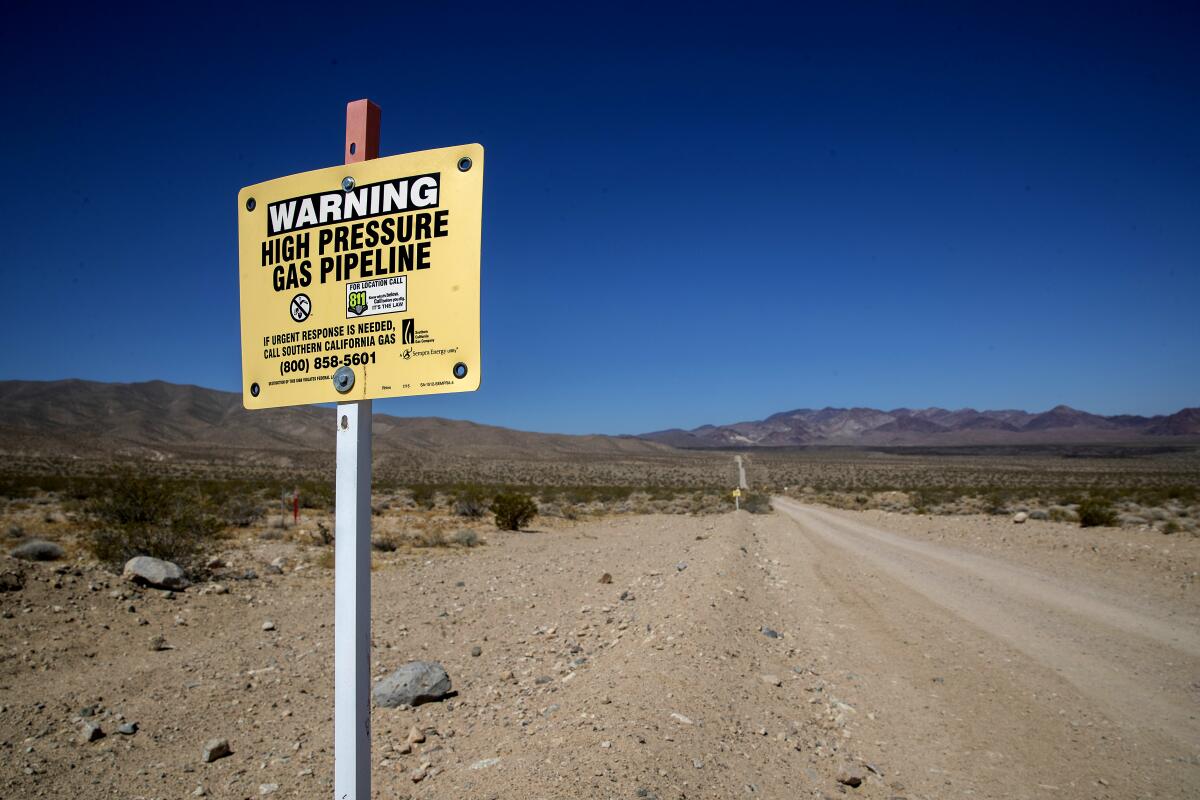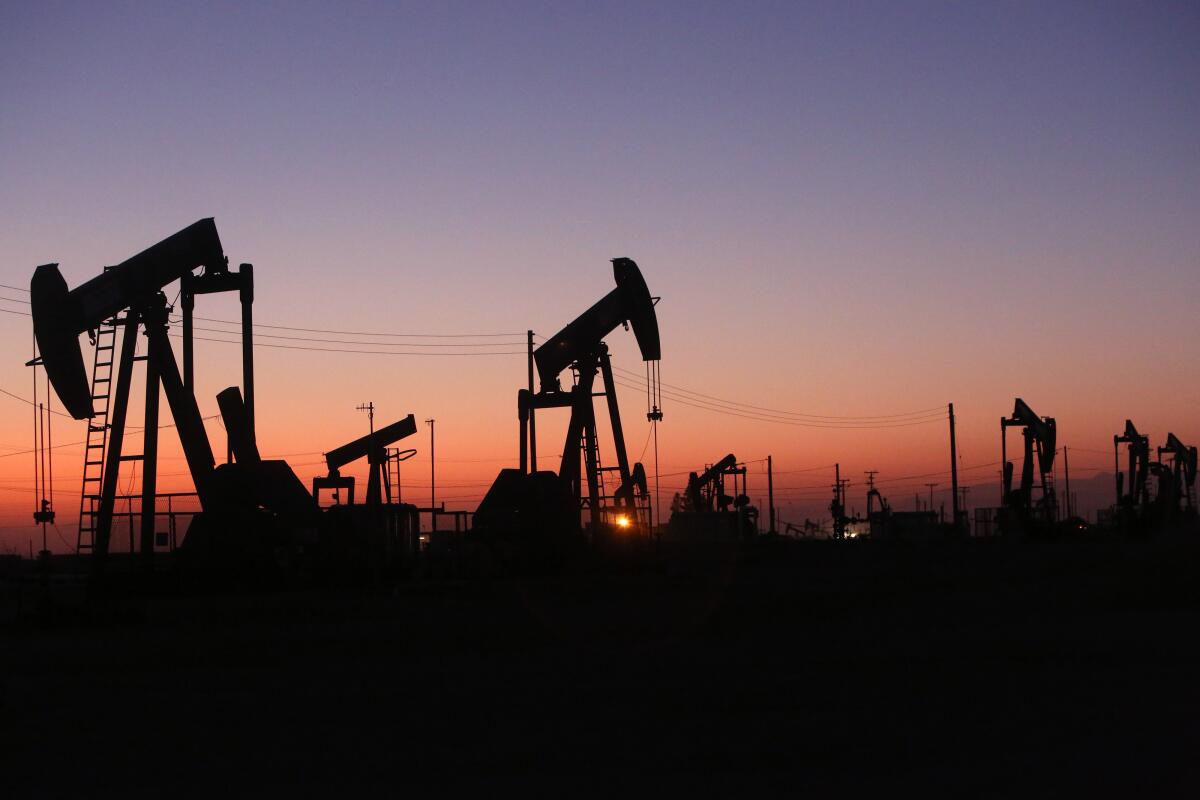Wind power didn’t cause the Texas blackouts. But it wasn’t just fossil fuels, either

This is the Feb. 18, 2021, edition of Boiling Point, a weekly newsletter about climate change and the environment in California and the American West. Sign up here to get it in your inbox.
As a deadly winter storm plunged millions of Texans into darkness this week, politicians skeptical of climate change and loyal to the oil and gas industry did what they do best: They blamed renewable energy.
Texas Gov. Greg Abbott told Fox News host Sean Hannity that the power grid emergency “shows how the Green New Deal would be a deadly deal for the United States of America.” Colorado Rep. Lauren Boebert tweeted that the Green New Deal “was just proven unsustainable as renewables are clearly unreliable.”
Even in Montana, where a mere 900 people lost power for half an hour, Rep. Matt Rosendale wrote that the rolling blackouts “demonstrate the dangerous consequences of transitioning away from reliable fossil fuel-based power sources.”
None of that prepared me for the reaction from former Texas Gov. and former U.S. Energy Secretary Rick Perry, who suggested Texans would be happy to live without power for longer than three days to avoid federal regulation of their electric grid.
I’ll leave Perry’s comments for you to judge. But as for the idea that the renewable energy is to blame for Texas and parts of other states running out of electricity, that’s pure fiction.
As I wrote in The Times this week, most of the power generators that have found themselves frozen solid or unable to access fuel aren’t wind turbines, but rather coal- and gas-fired power plants — in other words, fossil fuels. The very fuels that scientists say need to be phased out to avoid the worst consequences of a climate crisis that is exacerbating all kinds of extreme weather.
Toward a more sustainable California
Get Boiling Point, our newsletter exploring climate change, energy and the environment, and become part of the conversation — and the solution.
You may occasionally receive promotional content from the Los Angeles Times.
Texas’s main power grid, known as ERCOT, got 23% of its electricity from wind last year. But most of the rest came from coal and gas. Texans would not be suffering in such great numbers right now if all those traditional power plants had done their job.
At the same time, simply blaming fossil fuels for what went wrong isn’t quite right.
The ongoing power emergency is a “systemic failure,” said Daniel Cohan, an atmospheric scientist at Rice University in Houston. Texas officials didn’t require energy infrastructure to be upgraded to withstand freezing temperatures, despite similar problems during past cold spells. They allowed homes to be built to standards that leak too much heat. And they chose to operate their electric grid in isolation from the rest of the country, a decision that Times columnist Michael Hiltzik doesn’t think was wise.
“Every one of our sources of power supply underperformed. Every one of them is vulnerable to extreme weather and climate events in different ways. None of them were adequately weatherized or prepared,” Cohan wrote in a Twitter thread.
One possible reason most of Texas has been hit so hard is ERCOT’s deregulated energy market. I won’t get into all the details, but critics say the state’s approach doesn’t give power companies sufficient financial incentive to ensure reliability.
So just like California’s rolling blackouts last summer resulted from a range of causes — including a climate-fueled heat wave, poor planning by state regulators and faulty market design — so, too, are the forces at work in Texas nuanced.
For now, there’s one nuance I’d like to focus on, and that’s the role of natural gas.
As I’ve written previously, clean-energy activists in California and other states are pushing for building codes that require all-electric heating and cooking, because burning gas contributes to climate change and indoor air pollution. The gas industry has pushed back, arguing its product helps to keep energy affordable and can often be counted on when the electric grid is down.
The grid emergency in Texas will probably fuel that debate — pardon the pun — although I’m not sure exactly how yet.
The American Gas Assn., an industry trade group, said utilities delivered more gas Sunday and Monday than in any previous two-day period, as frigid temperatures across the U.S. drove up heating demand. The group cited a recent report from the American Gas Foundation, which made the case that gas has been a reliable energy source during polar vortexes, hurricanes and fires.
“We think it’s a shortsighted policy to ban any form of energy,” Karen Harbert, president of the American Gas Assn., told me. “Every customer is different. Every customer’s needs are different. And we shouldn’t be limiting choice.”
Still, the natural gas grid is far from perfect.
In Texas this week, gas wells froze and pipelines struggled to move as much fuel as normal, contributing to skyrocketing energy prices and electricity shortages. California has suffered disruptions on its gas grid too, most notably the methane blowout at the Aliso Canyon gas storage facility and the San Bruno explosion that killed eight people. There was also the lesser-known explosion of a gas pipeline running through the desert east of Los Angeles in 2017, which cost California ratepayers at least $1 billion.
And though buried gas pipelines are less vulnerable to extreme weather than aboveground electric wires — and less likely to ignite deadly wildfires, as Californians have learned — the gas and electric grids are increasingly interdependent.
Gas is now the country’s largest fuel source for generating electricity, having surpassed coal in 2016. That means there’s growing competition for gas each winter — including in a state like Texas, where 61% of homes rely on electricity for heating and most of the rest use gas. Gas utilities typically cut off deliveries to electric power plants before forcing households to go without fuel.
I spoke last October with John Moura, director of reliability assessments at the North American Electric Reliability Corp., a nonprofit regulatory agency. He told me the electric grid faces greater risks during winter than summer these days — in part because of that competition for gas between homes and power plants, and in part because of increasingly “schizophrenic” weather extremes.
“Wind blades are frozen. Transmission lines might be frozen, preventing flow of electricity. There’s a lot less coal. There’s less nuclear,” Moura said. “And then the gas generation — the fuel is delivered just in time, so if there’s any disruption in the winter, that could implicate the gas generation” in power outages.
Eerily prescient of what’s happening in Texas, right?

The Golden State, meanwhile, has its own issues to work out between the gas and electric grids.
The California Public Utilities Commission has cited the Los Angeles Basin’s continued dependence on gas-fired power plants as a reason it’s hesitant to shut down the Aliso Canyon gas storage field — even as the agency continues not to plan for the clean energy infrastructure that critics say could help replace those power plants. Another tricky question is how much ratepayer money companies such as Southern California Gas Co. should be allowed to keep investing in pipeline and storage infrastructure.
Ultimately, solving these challenges will mean figuring out how to transition as quickly as possible to an energy system that doesn’t spew greenhouse gases into the atmosphere, while also keeping the lights on and keeping costs in line. As I wrote last week, it’s going to be a delicate balancing act. Some of the steps will be easy; others will not.
For now, let’s consider Texas the latest warning sign of what can go wrong if we don’t strike the right balance.
Here’s what’s happening around the West:
TOP STORIES
Remember two weeks ago, when I asked Los Angeles City Council members where they stand on the idea of banning gas in new homes? If you thought that was interesting, be sure to check out this story by Rebecca Leber for Mother Jones about how the fossil fuel industry convinced Americans to love gas stoves, and the tactics companies are using now to convince people that gas is safe and clean. The story includes internal emails from an industry trade group and details on an incident in Culver City.
Last week’s oil spill in the San Francisco Bay led to renewed calls from activists for Richmond to shut down a Chevron refinery. Gabrielle Canon reports for the Guardian on how pollution from the refinery affects the city’s largely Black, Latino and working-class communities, noting that cancer and childhood asthma rates are higher than in other parts of the county.
Several women said they faced sexual harassment at the Metropolitan Water District of Southern California, describing a culture in which abusive behavior is largely tolerated. Read this important story by my colleague Adam Elmahrek about an agency that provides much of the water that makes life possible in Los Angeles and is a dominant player in state water politics.
POLITICAL CLIMATE

Two California lawmakers responded to Gov. Gavin Newsom’s call for a bill to ban fracking. The legislation introduced this week would also outlaw the risky drilling technique known as cyclic steaming and require a 2,500-foot buffer zone between oil operations and neighborhoods, as Janet Wilson reports for the Desert Sun. The big question now is whether Newsom will back the bill. In the meantime, the governor’s appointees continue to to approve new fracking permits, per the Desert Sun’s Mark Olalde.
The Newsom administration is showing strong interest in a proposed desalination plant in Orange County. Members of the water board considering approval of the $1.4-billion project received calls from the governor’s environmental protection secretary stressing Newsom’s commitment to “statewide water resilience,” Martin Wisckol reports for the Orange County Register. Critics point to Newsom’s friendship with Jason Kinney, whose lobbying firm represents the developer, per The Times’ Matt Szabo.
President Biden will not move forward with changes to the Desert Renewable Energy Conservation Plan proposed in the final days of the Trump administration. I wrote last month about the now-jettisoned Trump proposal, which would have opened up more land to solar and wind farms at the expense of wildlife habitat and intact landscapes. It seems that in an early conflict between renewable energy and conservation, Biden chose conservation. More details here from the Desert Sun’s Mark Olalde.
WATER IN THE WEST
Longer fire seasons are leaving behind incinerated plastics, lead, pesticides and other toxic particles that can contaminate water supplies. My colleague Susanne Rust reports that it’s a growing challenge for water district across the West, including on California’s Central Coast. The region burned badly last year, leaving some residents without running water for months.
In a separate but related problem, California’s rainy season is getting underway nearly a month later now than it did in the 1960s. A new study finds that instead of starting in November, the rains typically begin in December and are concentrated in January and February, as Paul Duginski reports for The Times. That means more opportunities for fires to burn late into the fall.
The U.S. Environmental Protection Agency plans to spend roughly $300 million to stem the flow of sewage from Mexico into San Diego via the Tijuana River. The funding was made possible by the U.S.-Mexico-Canada trade agreement negotiated by the Trump administration, but until now it was unclear how much of the money would be used to reduce cross-border pollution in the Tijuana River Valley, as Joshua Emerson Smith and Wendy Fry report for the San Diego Union-Tribune.
THE ENERGY TRANSITION
The California Public Utilities Commission is requiring utilities to purchase new energy supplies ahead of next summer, in hopes of avoiding a repeat of last year’s rolling blackouts. But critics worry the agency’s decision will result in more gas on the grid, as J.D. Morris reports for the San Francisco Chronicle. Also, in a last-minute change to its decision, the agency sought to make sure newly purchased energy supplies don’t get exported to other states, per the San Diego Union-Tribune’s Rob Nikolewski.
A new report says the fracking boom was not the economic boon for Appalachia that it’s often made out to be. The Ohio River Valley Institute found that the oil and gas drilling technique “largely failed to bring the things that help people and local communities the most: jobs, personal income gains and population growth,” James Bruggers reports for Inside Climate News.
San Diego County plans to streamline environmental reviews for solar and wind farms in unincorporated areas. More details here from Rob Nikolewski at the Union-Tribune; this is one place to watch as tension grows between building renewable energy facilities and leaving rural lands untouched. The city of San Diego, meanwhile, is launching a climate resilience campaign to prepare for more extreme heat, rising fire risk and eroding coastline, the Union-Tribune’s David Garrick reports.
ONE MORE THING

My enormously talented colleague Rosanna Xia, who covers the California coast, is hosting a conversation next week with with Charlotte McConaghy, author of the acclaimed novel “Migrations.”
The book is set in a world where climate change has accelerated rapidly and driven nearly all wildlife to extinction, as Margaret Wappler writes in a feature for The Times. The story centers on a young woman who travels to Greenland to follow the path of the Arctic tern, a migrating bird that makes an incredible 25,000-mile round-trip journey each year from the Arctic to Antarctica.
You can register here for Rosanna’s conversation with the author, which will stream live online on Wednesday, Feb. 24, at 7 p.m. PST. It’s part of the L.A. Times Book Club, which you can learn more about here.
ACTUALLY, JUST ONE MORE
This didn’t fit anywhere else, but my colleague David Lazarus wrote a column picking apart the beef industry’s claim that beef is not a serious climate problem. Spoiler alert: It is. But as much as I enjoy some plant-based meat substitutes, I also continue to occasionally eat the real thing — including while writing this week’s newsletter, when, full disclosure, I scarfed down a hamburger.
We’ll be back in your inbox next week. If you enjoyed this newsletter, please consider forwarding it to your friends and colleagues.




